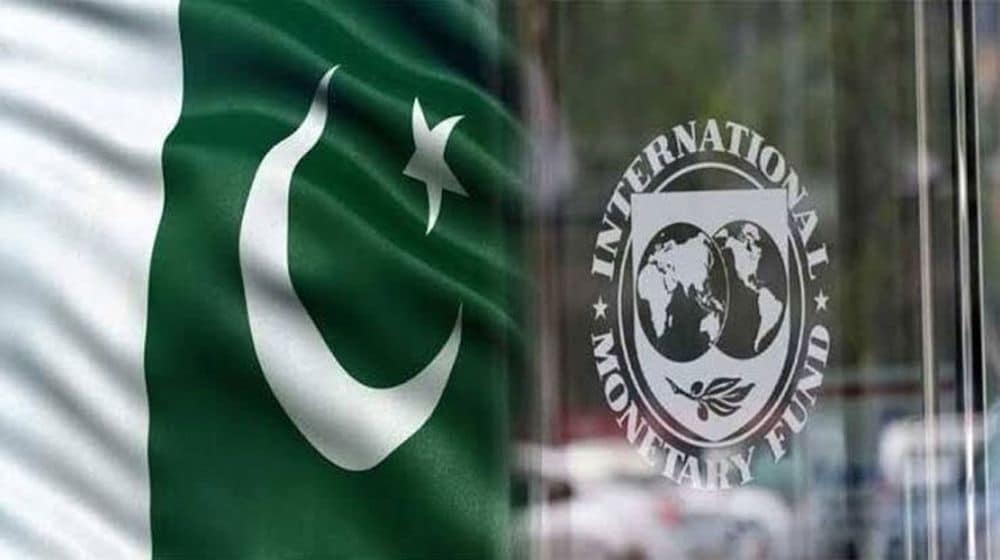After months of back-and-forth between Islamabad and Washington, DC, Pakistan has finally clinched a $1.1 billion bailout package with the International Monetary Fund, putting fears about an immediate default to rest. Surely, it’s a relief — at least for financial markets and the broader investment climate — but recent floods could complicate Pakistan’s path to economic stability. Would the IMF be willing to offer some flexibility on its deal terms during these unprecedented times?
The IMF’s conditions and macroeconomic targets were agreed upon before the floods fueled concerns about an economic and humanitarian crisis, and the fund’s latest statement didn’t mention anything about the calamity. Planning Minister Ahsan Iqbal recently told Reuters that the deadly floods will likely cost the country more than $10 billion, based on preliminary estimates.
Pakistan’s government could request a deferment of loan repayments given the national emergency, similar to extensions granted during the COVID-19 pandemic, Sana Tawfik, senior analyst at Arif Habib, told ProPakistani.
As part of the IMF deal, Pakistan will have to show a primary budget surplus of 0.2% of GDP in FY23. “Achieving a primary surplus would be a challenging task” amid lower collection in taxes due to imports’ curtailment, Sana said.
“We have received waivers for not achieving a primary surplus in the past,” she added.
Pakistan could put forth its case at a follow-up meeting with the IMF, setting the stage to potentially renegotiate or revisit some terms, Sana said. “It depends on how strong Pakistan’s case is … but I am sure the IMF will look into it,” she added.
Inflation and GDP Outlook
The IMF predicts the country’s GDP to slow to 3.5% in FY23 from last year’s 6%, while Arif Habib forecasts this fiscal year’s economic growth to instead clock in at 2.49%. Sana signaled disruptions to the agriculture, industrial and services sectors due to heavy monsoon rains, saying food inflationary pressures are expected to further intensify.
“Food shortage will drive supply side shocks,” Sana said. The IMF forecasts headline inflation accelerating to 19.9% in the ongoing fiscal year from 12.1% in fiscal 2022.
The State Bank of Pakistan on Aug. 22 estimated FY23 GDP growth between 3% and 4% but warned that rains could weigh on economic activity due to their expected impact on agricultural production. The SBP estimated inflation to peak in the first quarter after hitting 24.9% in July, with expectations for price growth to ease through the rest of the year as demand moderates.
Nearly 80,000 to 100,000 square kilometer of area is estimated to have been affected by the recent spell of heavy rains, compared with more than 150,000 sq kms of area impacted in 2010, according to an Arif Habib report from Aug. 29. About 3.4% of the total cultivated area has been damaged, which is “a key cause of concern as agriculture contributes close to 19% to the GDP of Pakistan, employing nearly 42% of the workforce,” the report showed.
Where is the USD-PKR Rate Headed?
While there is uncertainty as to how the IMF would approach a potential request from Pakistan for relaxation on some of the terms, there is something to celebrate. The IMF pact not only releases crucial funds needed to keep the economy afloat but also paves the way to unlock future funding from allies. With foreign exchange reserves expected to get a boost, including due to aid for the flood victims, the USD-PKR rate could see much-needed recovery and stability.
“After IMF endorsement, more dollar funding for Pakistan is likely from bilateral, multi-lateral and other sources which will support foreign exchange reserves,” Topline Securities’ Umair Naseer said in a report. “This will also bring stability to the currency which had recently come under pressure over the uncertainty of IMF program future.”
Sana projects the USD-PKR rate remaining range-bound in the short term but reaching between the 205 and 210 level by December. “The timing of the inflows we are expecting would be crucial,” as well as the trajectory of international commodity prices and the performance of the dollar index, she said.
Conclusion
To say the least, Pakistan is at a critical economic juncture and the road ahead could be a bumpy one. While the IMF deal helps shore up reserves and stabilize the currency, the job is not done yet. The IMF has demanded structural reforms to strengthen governance and improve the business environment, which, if delivered, would go a long way in strengthening our fundamentals. However, the recent floods could derail Pakistan’s economic recovery, triggering the need to engage constructively with the IMF regarding on-ground realities. The IMF should be willing to listen, but are we ready to have that conversation? We’ll find out.

























